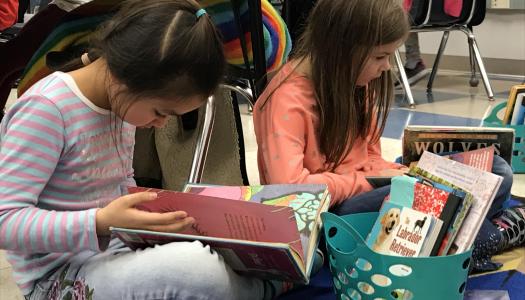Joan Moser
August 12, 2011

I have been reading non-fiction text with great fervency the past few weeks. I love dogs and have had dogs my whole life, but I've never raised a puppy. By the time you read this, Cooper, our ten-week-old addition, will have been with us for two days. Now you understand the sense of urgency.
"Puppy 101 -- A Crash Course" involved voraciously reading books, magazines and web pages, with periodic shopping breaks for squeaky toys and treats mixed in. It was during the process of digging into the voluminous texts that I learned a lot about myself as a reader and began reflecting on how my learning might apply to life in the classroom.
I consider myself a good reader. I read a lot and I read a wide variety of genres. I read for pleasure, for my profession, and for the children I work with. Therefore, tackling my first book on raising a smart puppy seemed a simple undertaking. I devoured the first three chapters, nodding my head in agreement and understanding as I imagined applying the information to my soon-to-arrive-pup. When my husband asked what I'd learned, I realized I wasn't able to articulate the information unless it had been relayed within the context of an anecdote. The lessons that involved stories of the author's puppies were cemented in my brain. I could visualize the training and even see myself repeating the lessons with my new dog. That left much of the valuable information unlearned however, which led me to go back and attack the text differently.
Number one on my list of strategies was to reread and highlight the important parts. Retention improved, but not enough, so I employed a second strategy, taking notes in a separate notebook as I read. Now things were finally beginning to stick.
Here are some of the things marinating in my mind:
- The text was easily decodable, but my limited background knowledge made the content a little more challenging. I want to be sure I am helping to support and build background knowledge for my students as they encounter text with which they may have limited schema. But also, I want to be certain to not impose strict limitations of what students read based on their reading level or the Lexile level. As I learned, not having ample background knowledge impedes the comprehension of even simple text. Likewise, ample background knowledge can allow readers to decode and comprehend text that is considered beyond their reading level.
- While I could easily retain information attached to narratives, Gail does not need them. She loves research and informational text and is a "just give me the facts" sort of learner. Do I skew my lessons toward the 'storytelling' side because that is they way I learn best, or provide a balance for the 'just the facts' kids in my room?
- While I needed to record my thoughts, connections and important learning in a separate notebook, Gail prefers to write in the margins of her books. Am I modeling all the ways learners can ingest information, or just what works best for me? Post-it notes, highlighters, margin memos and notebooks should be explored so students can discover what really works for them.
Who knew that getting a new puppy would teach me so much about reading? Now back to learning about house training!





